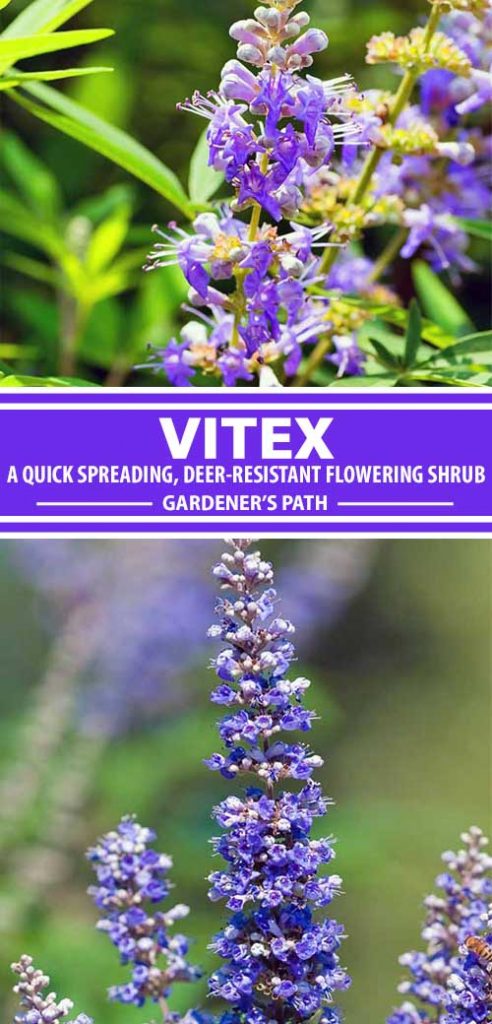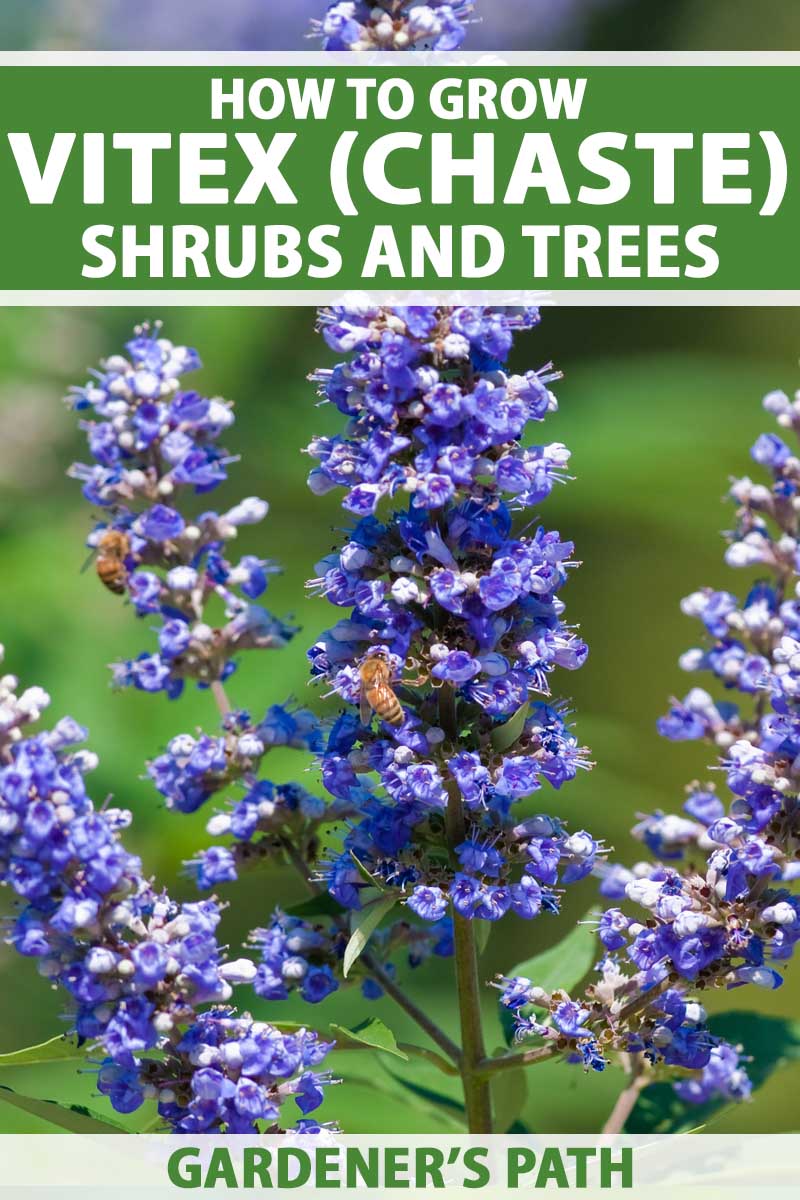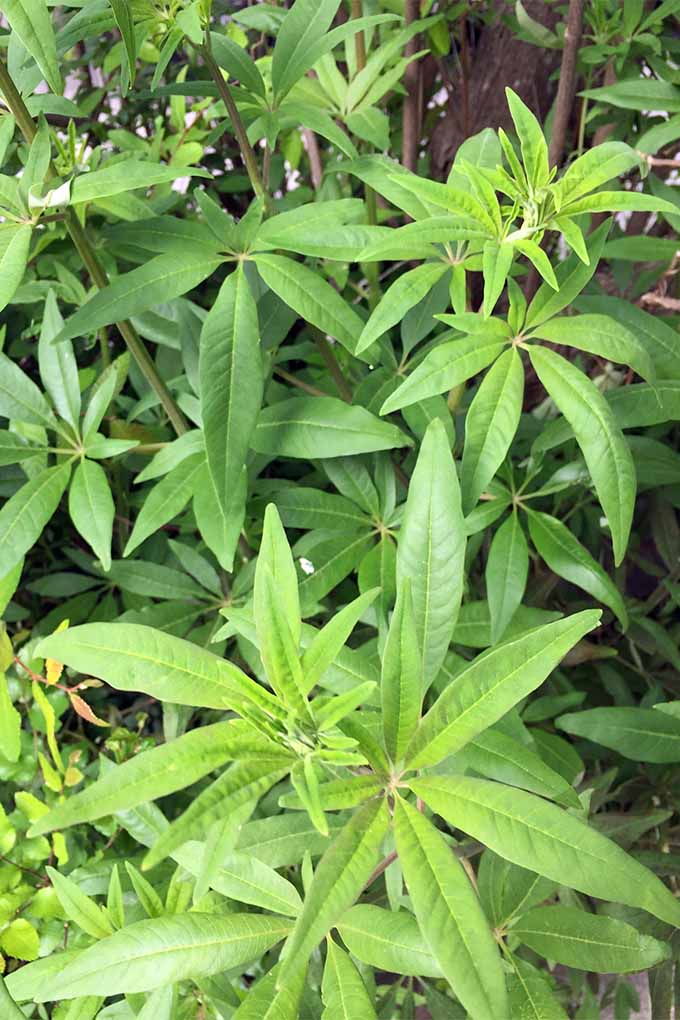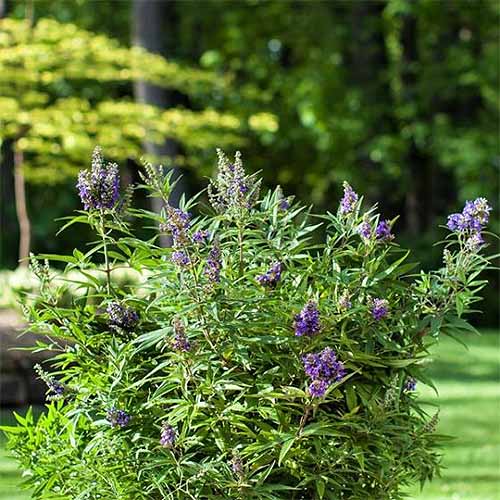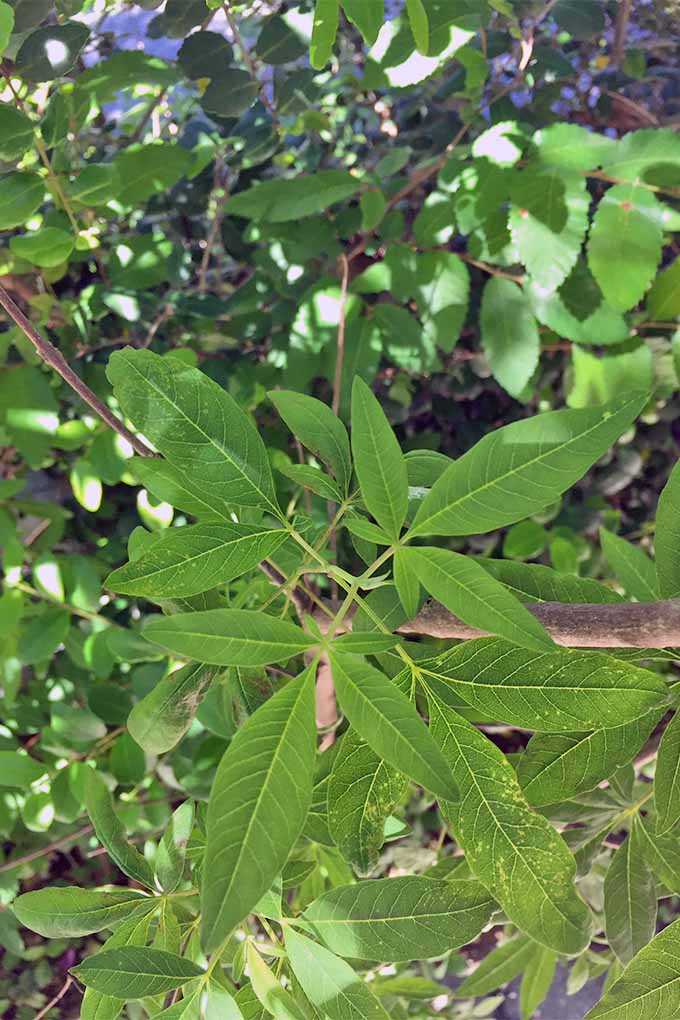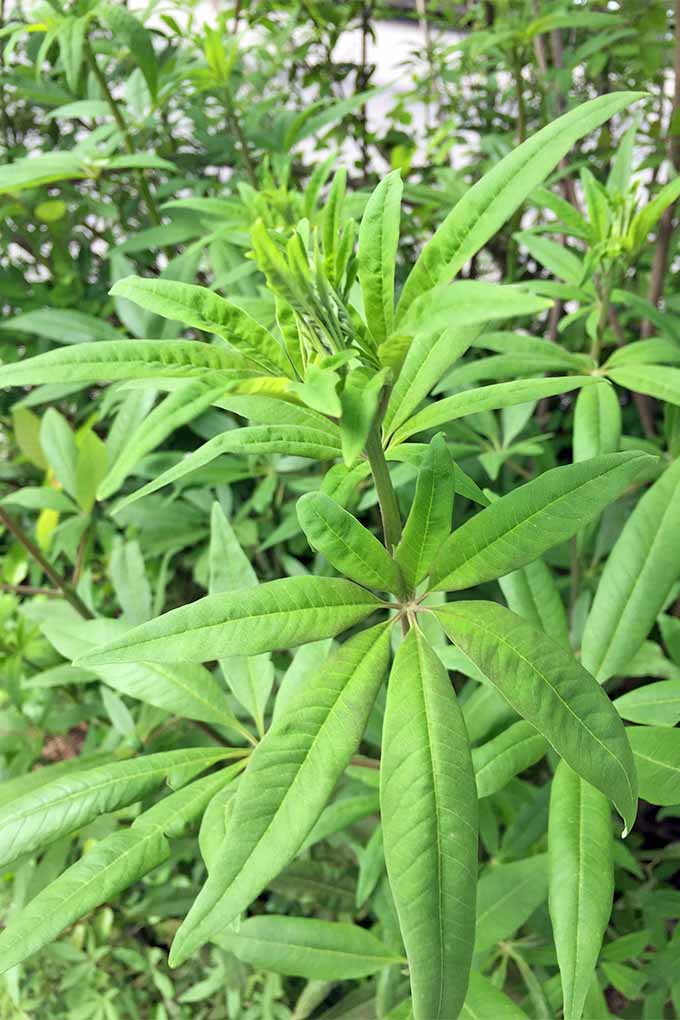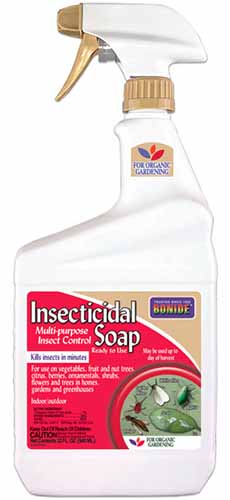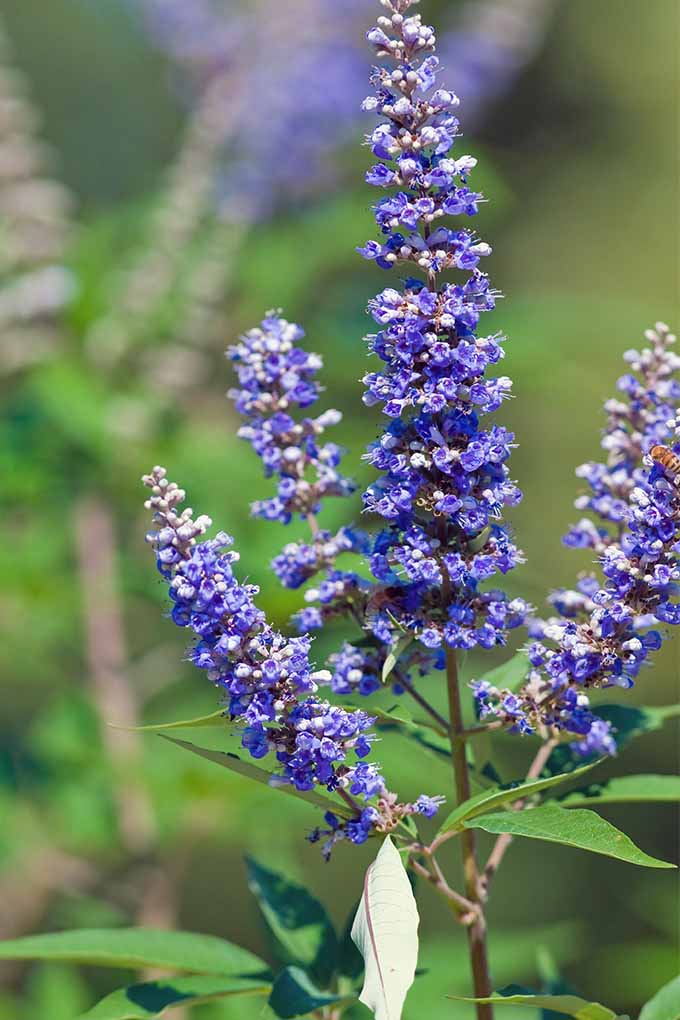In an interesting twist, it got a couple of its nicknames – chaste plant and monk’s pepper – from old beliefs that utilizing potions made from the plant’s berries helped maidens remain maidenly, and helped monks adhere to their vows of chastity. Hardy in Zones 6 to 9, V. agnus-castus is sometimes referred to as “lilac of the South” because its beautiful, five- to 12-inch purple, lavender, off-white, or light pink flower spikes resemble those of lilac. Other nicknames include sage tree, and Indian spice vitex. We link to vendors to help you find relevant products. If you buy from one of our links, we may earn a commission. This butterfly-attractor can be pruned into shrub form, or allowed to reach tree heights – 15 to 20 feet – with a spread as wide as 10 to 15 feet. As a tree, expect it to be multi-trunked and vase-shaped, similar to crape myrtle. Native to China and India, V. agnus-castus has been planted in the United States for many years, and this fast-growing and deer-resistant plant has even naturalized in the southern United States. Here’s what’s to come in this article: Let’s take a look at the history and growing habits of this attractive plant, so you can grow your own.
A Plethora of Purposes
Ancient Egyptians, Greeks, and Romans ascribed many healing powers to the seeds of vitex, mostly gastrointestinal. And as I mentioned above, vitex has long been associated with sexual passion, or rather, a lack of it. Ancients put the leaves in the beds of maidens whose maidenhood they wished to preserve. Today, some women take vitex-containing supplements to ease symptoms associated with premenstrual syndrome. Other people take it to curb acne.
Happy to Reproduce (And Where to Buy)
Vitex loves hot and dry growing conditions. It wants full sun and well-draining soil – either acidic or alkaline. We planted ours in native soil mixed with leftover builder dirt, with nothing special added in. The area where we planted it – that strip between the sidewalk and street common in suburban neighborhoods – was formerly home to St. Augustine grass.
In the Dark of Night
You can also propagate vitex from cuttings. Ours have multiplied all over the stinkin’ place. If you don’t cut the spent blooms off, the plant will form attractive berries, which contain seeds that are more than happy to make more vitex plants wherever they fall. With that in mind, if you’re thinking you want to add vitex to your landscape, you can buy nursery starts in containers of varying sizes. Purple flowering plants are available in #3 or #5 containers from Nature Hills Nursery. Chaste Tree This traditional chaste tree specimen has a mature height and spread of 15 to 25 feet. This variety can be grown in Zones 5 to 9. Looking for something a little smaller? The ’Blue Puffball’ cultivar is perfect for growing as a shrub. Live plants are available from Nature Hills Nursery. V. agnus-castus ‘PIIVAC-Il’ It will reach a maximum height and spread of three to four feet, and is available in #1 or #3 containers from Nature Hills Nursery. It can be grown in Zones 6 to 9. The ’Pink Pinnacle’ cultivar is also available exclusively from Nature Hills. V. agnus-castus ‘V07-SC-OP-4’ These are available in #3 containers, and will reach a mature height and spread of three to four feet. This pink variety will grow well in Zones 6 to 9. ’Shoal Creek’ is another outstanding cultivar with violet-blue flower spikes, and it’s available from Nature Hills. ‘Shoal Creek’ Chaste Tree It will reach a max height and spread of 10 to 12 feet, and plants are available in #3 containers. It grows best in Zones 6 to 9. To do this, nab a four- to six-inch softwood cutting from your neighbor’s plant in late spring or early summer. It’s important that you choose a piece of stem that’s neither brand new, nor fully mature. You can determine this by bending a stem. It if breaks with a snap, bingo! Softwood. If it bends but does not break, that section is too immature. If the stem doesn’t bend at all, it is hardwood and not suitable for propagation. Prepare a destination container by filling it with a soilless mix containing a good bit of perlite, moistening the mix, and dipping a pencil into the mix to create a hole for your cutting. Make sure the end of your propagation piece is cleanly cut, remove the lower leaves, and then dip it in rooting hormone – liquid or powder. Place the cutting in the prepared container and gently press the potting mix up against the stem. Place a plastic dome, if you have one, or a clear plastic bag over the container and place it in bright, indirect light to create a miniature greenhouse. Check the cutting daily, adding a bit of water if the potting mix feels dry. After four to five weeks, check for roots by either seeing if any are peeking out of the holes in the bottom of the container, or gently lifting the plant out of the container. When you see roots, you can remove the plastic, and transfer to a larger container filled with 80 percent soil and 20 percent perlite. Leave the starts in their pots for several months, and then transplant to the garden the following spring.
A Hard Prune, And That’s About It
Experts say this deciduous plant should be cut to the ground every winter to keep it a manageable size. That doesn’t happen at my house. We have a hard enough time just keeping it off the sidewalk, so it doesn’t annoy passersby. Prune as you like for shape – into a full shrub, or more tree-like. Ours sends up these crazy, skinny, long, top-heavy canes from the base; we whack those off because they look stupid, and they fall over into the sidewalk or into the street where my son parks his car. Our car. The literature will tell you to water vitex infrequently but deeply from April to October. I guess if you count the five or so rainfalls we might get during that time in Austin, then that’s what ours gets. We give it no supplemental water and no fertilizer. And yet, it’s unstoppable. If your vitex looks like it needs a little pick-me-up, give it a dose of 10-10-10 (NPK) fertilizer in early spring and in early summer.
Maybe, Maybe Not
If you see aphids, trying blasting them away with water, or try an insecticidal soap such as this one from Bonide, available at Arbico Organics. Bonide Insecticidal Soap It is available in 12- or 32-ounce ready-to-spray bottles. Scale can also be water-blasted off, or you can use neem oil to smother them. Consider this neem oil also from Bonide, available from Arbico Organics. Bonide Neem Oil This potion is also effective against whiteflies, which some gardeners have reported seeing on vitex.
Big or Small, It’s a Keeper
If you have a large space that needs filling quickly, or if you’re diligent with the pruners, vitex might be a good choice for you. This fast-grower can be kept trimmed to bush size or allowed to grow into a multi-trunked, vase-shaped tree. Either way, you’ll be rewarded with attractive, lilac-like boom spikes all summer long. Have you ever grown V. agnus-castus? Which of its many nicknames does it go by in your neighborhood? Tell us in the comments section below. If you’d like to try your hand at another shrub-slash-tree, consider Chinese fringe flower.
